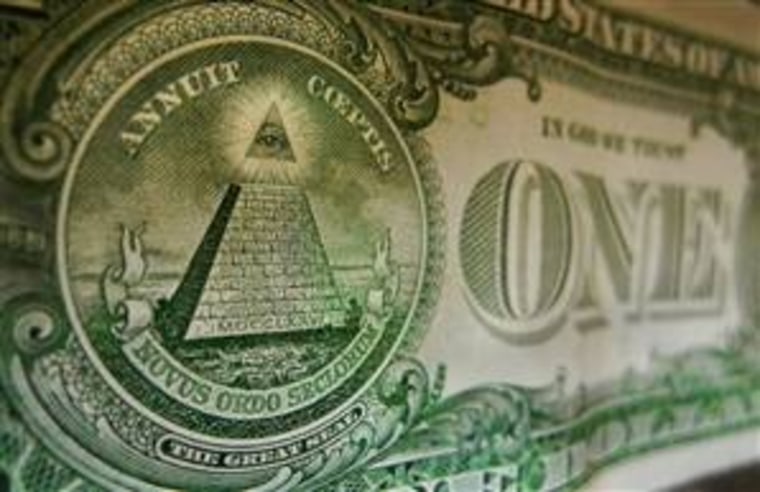As if holiday shopping weren’t stressful enough, a new report says the dwindling stash of cash in your wallet might be tainted with the controversial chemical BPA. Tests on a small sample of dollar bills found traces of bisphenol A, the hormone-mimicking chemical linked to health problems from infertility and cancer to early puberty and obesity, said Erika Schreder, a scientist who led the study. “Most people don’t expect to find a toxic chemical in their wallets,” said Schreder, who works for the Washington Toxics Coalition in Seattle, which co-sponsored the report with the advocacy group Safer Chemicals Health Families. This isn’t the first time currency has been linked to nasty contaminants. Other studies have found bills to be tainted with germs, bacteria -- even cocaine. But it is among new findings to suggest that cash contributes to BPA exposure already found in canned foods, baby bottles and water bottles. The BPA likely rubbed off on the money from store receipts, which have been found to be loaded with the chemical used in thermal paper printing, Schreder said. Previous studies have shown that BPA-laced receipts are issued by major retailers such as CVS, KFC and the U.S. Postal service, and that the powder-like substance can stick to people’s fingers and get in their mouths. In this new study, Schreder and other scientists tested 22 receipts from retailers in 10 states and Washington, D.C., and detected BPA in half of them. In a receipt from Safeway, for instance, BPA accounted for 2.2 percent of the receipt's total weight. Then they tested 22 dollar bills from the wallets of people in 18 states and Washington, D.C. Twenty-one of the bills tested positive for BPA at levels ranging from .12 parts per million to 11 parts per million. Government officials generally agree that BPA doses should remain below 50 milligrams of BPA per kilogram of body weight per day, but too few studies have been conducted to determine definitively actual levels of BPA exposure or the health effects of those exposures. That adds to the arguments in pending bills in Congress that call for better regulation of potentially dangerous chemicals, Schreder said. Government health officials have expressed concern about the effects of BPA on unborn and very young children. “People should be concerned that there are unregulated uses of a hormone-disrupting chemical that are leading to widespread contamination in unexpected ways,” Schreder said. But at least one critic said that testing 22 dollar bills for BPA contamination hardly counts as a scientific sample. The U.S. Treasury Department printed 2.6 billion $1 bills last year alone. “I hear these kinds of reports and my first reaction is to shrug and say, ‘So what?’’’ said Neal Langerman, a chemist and member of the health and safety division of the American Chemical Society. "The data don't even rise to the level of speculation." BPA is ubiquitous, Langerman agreed, but he said there's little evidence so far to suggest that low levels of exposure lead to major health hazards. There’s little doubt that BPA rubs from receipts onto money, Langerman agreed. On that point, he and Schreder offered similar advice to consumers worried about dirty money: Wash your hands. Find The Body Odd on Twitter and on Facebook.
Dirty money: Tests detect chemical BPA on dollar bills
